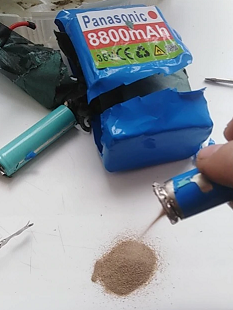Many of us have probably encountered this problem. A headlamp or other light was ordered from Aliexpress, the corresponding batteries were also ordered. Although the light shines great, it drains the batteries within twenty minutes. So you try to order a replacement, hoping for even more capacity, and the result is the same. So where is the problem? In flashlights? In Aliexpress? In my light?
If I had to characterize it briefly, in one thought, the answer would be that everything in the world is falsified. Chinese sites are flooded with batteries with fake capacity, and unless you know a proven seller, it's still a cat in the bag. But let's take a deeper look at why this is so and what your options are.
What exactly is Article 18,650
The 18650 battery and its bigger sister 21700 (there are more types, these are the most common) are lithium batteries, where their designation refers to the size of the battery (e.g. diameter 18 mm, length 65 mm, or diameter 21 mm and length 70 mm) . Unlike commonly available batteries, these cells use lithium-ion technology, which is characterized by high energy density (a battery of a certain size can deliver more juice than, for example, a NiMH or lead-acid battery of the same size). However, this benefit comes at a price, which we will discuss below.
Paper can handle anything
And it's probably not the same with the protective film of the battery. In this case, however, we do not mean its insulating capabilities, but the fact that some manufacturers / distributors print data on it, which would make others blush. So then there are 18,650 cells in circulation in the world with capacities of 7000, 9800 and even 66000 mAh. Of course, this is unrealistic due to the physical nature of lithium cells. Basically, anything above 3500 mAh smacks of fraud and you'll be happy if such an article can deliver a tenth of the promised capacity (in reality, mostly 250-500 mAh).

Deceptive articles 18650 from Amazon.ae
Weight as the first indicator
A fake article can already be recognized by feeling. It is usually the weight of the battery that is the first to tell that something is wrong. While an honest 18650 Li-Ion cell weighs around 45-50g, with a fake battery it will be up to 30g. Some manufacturers are aware of this fact and there are even batteries on the market that have been filled with sand to make them heavier. However, even sand cannot compensate for the weight of the "expensive" metal.

Battery filled with sand (source: cellsavior.com)
A few words about the protection of lithium batteries
Li-po and Li-ion technology is gradually replacing batteries in almost every sphere. It got into mobile phones, electric cars and, last but not least, into the ranks of fishermen (cargo boats, power banks...) Even if it happens rarely and in extreme cases, this technology can be very dangerous from the point of view of fire protection. That is, the lithium cell works correctly only in a certain voltage range (2.5 - 4.2 V). When it discharges too much, destructive phenomena occur, and when it is recharged, it can overheat and catch fire. However, the minimum is that it loses capacity. The same applies to inappropriate charging. In order to prevent these things, the battery must be protected by a miniature electronic circuit, the so-called BMS circuit (Battery Management System).
The role of this circuit is therefore to protect the battery against:
- Completely discharged
- Overcharging
- Overcurrent
And here the dog is buried. While the price of an ordinary lithium cell with normal capacity, without protection, ranges from €3-5, the price of the same cell with protection can increase to €8-13. Another problem is that this BMS circuit sometimes slightly extends the size of the battery. So what options do manufacturers have in this case? But sell cells without protection, sell cells with protection but with low capacity or sell more expensive cells. So which finger did the manufacturer bite in the case of your battery?

BMS circuit for battery cooling
Okay, so where to get quality batteries?
They can also be found on the above pages. But since those sites are flooded with fake batteries, which may even look like high-quality originals, it is very difficult to find suitable ones. In principle, you should avoid cells that promise more than 3500 mAh and those that contain the word "fire" in the name (Firecell, Ultrafire ...). European sites usually don't allow themselves to have batteries in circulation that promise something they can't deliver. However, you will pay a little extra for these batteries.




Share
Simply share to notify your friends too